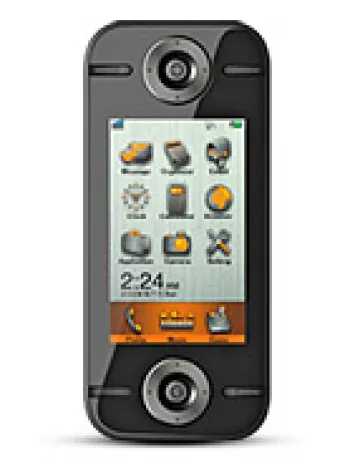Comprehensive Review Micromax Canvas Selfie 3 Q348 Specs Prices Pros & Cons

Overview of Micromax Canvas Selfie 3 Q348
The Micromax Canvas Selfie 3 Q348 is a compact and stylish smartphone that was announced and released in August 2015. Catering to the selfie-loving generation, this device comes with notable features, particularly its camera capabilities, and other standard smartphone functionalities. Although discontinued now, it remains a discussion point for those interested in classic smartphones designed for the budget-conscious user.
Network and Connectivity
This model supports GSM and HSPA technologies, ensuring basic mobile connectivity. It operates on 2G and 3G bands - GSM 850/900/1800/1900 for both SIM slots and HSDPA 900/2100 respectively. While lacking 4G LTE support, it offers a maximum data speed of HSPA 21.1/5.76 Mbps, which caters sufficiently for browsing and basic app usage.
Design and Build
In terms of dimensions, the Canvas Selfie 3 Q348 measures 141 x 68.4 x 7.8 mm and weighs a mere 110 grams, making it lightweight and easy to handle. Its build is designed to support dual SIM functionality, allowing users the flexibility of using two numbers. Despite its plastic construction, it maintains a sleek form factor.
Display Characteristics
The device features an AMOLED display measuring 4.8 inches, which covers about 65.9% of the front surface. The screen resolution is set at 720 x 1280 pixels with a 16:9 aspect ratio, translating to roughly 306 pixels per inch (ppi). The Corning Gorilla Glass 3 protection adds a resilient layer against scratches and minor impacts.
Operating System and Performance
It runs on Android 5.0 Lollipop, an older version of Android, yet stable with enough compatibility for essential applications. The Micromax Canvas Selfie 3 Q348 is powered by a Mediatek MT6582 chipset, with a quad-core 1.3 GHz Cortex-A7 CPU and Mali-400MP2 GPU. This configuration was quite typical for mid-range smartphones of its time and supports basic multi-tasking.
Memory and Storage
The phone provides 1GB of RAM and 8GB of internal storage, which can be expanded via a microSDHC card slot. This allowance offers users the capability to store additional data beyond the native storage limits, useful for media files and application data.
Camera Features
The camera setup is a significant highlight of the Canvas Selfie 3. Both the rear and front cameras boast an 8 MP resolution. The rear camera is equipped with autofocus and an LED flash, delivering satisfactory photo quality for the user. The front camera also includes an LED flash, enhancing its selfie-taking capabilities, a notable feature for its targeted audience. Video capabilities for the main camera are standard at 1080p@30fps.
Sound and Audio
The device includes a loudspeaker and a 3.5mm headphone jack, providing traditional options for audio output. These features ensure the device meets basic audio needs for calls and music playback without the need for additional accessories.
Connectivity Options
The Canvas Selfie 3 supports Wi-Fi 802.11 b/g/n standards and can act as a mobile hotspot. It also includes Bluetooth 4.1 with A2DP and LE functionalities for connecting to various devices. While it lacks NFC, it does integrate GPS support and an FM radio. Charging and data transfer functionalities are managed through a microUSB 2.0 port.
Battery Life
Powered by a non-removable Li-Ion 2300 mAh battery, the device can uphold stand-by for up to 275 hours and offers up to 8 hours and 30 minutes of talk time. Given the specifications, this capacity is reasonable, allowing a full day's moderate usage without requiring frequent recharges.
Additional Features
Standard sensors on the device include an accelerometer and proximity sensor, enriching the user experience by supporting essential functionalities such as auto-rotate and display power management.
Miscellaneous Information
Originally available in a classic black color, the Micromax Canvas Selfie 3 Q348 maintains conservative SAR values within EU limits, ensuring user safety in terms of radiation exposure.
In summary, the Micromax Canvas Selfie 3 Q348 offers a balanced blend of design, functionality, and affordability. While it may not keep up with modern high-performance smartphones, it was undoubtedly competitive at the time of its release, especially for users prioritizing photography and require dual-SIM capability. Its lightweight design, solid build, and basic features still make it a noteworthy mention in dialogues involving entry-level smartphones from the mid-2010s.
Key Features of Micromax Canvas Selfie 3 Q348
- AMOLED Display: 4.8 inches with 720 x 1280 pixel resolution and Corning Gorilla Glass 3 protection.
- Compact and Lightweight: Dimensions of 141 x 68.4 x 7.8 mm and a weight of 110 g.
- Dual SIM Capability: Supports GSM and HSPA networks.
- Performance: Powered by a Quad-core 1.3 GHz Cortex-A7 processor and Mediatek MT6582 chipset.
- Photography: 8 MP rear camera and 8 MP front selfie camera, both equipped with LED flash.
- Battery Life: Li-Ion 2300 mAh non-removable battery offering up to 275 hours of standby time.
- Android 5.0 (Lollipop) Operating System.
- Expandable Storage: Supports microSDHC for additional storage.
- Connectivity: Includes Wi-Fi, Bluetooth 4.1, GPS, FM radio, and microUSB 2.0.
Disadvantages of Micromax Canvas Selfie 3 Q348
- Discontinued model, making support and spare parts potentially difficult to find.
- Only supports 3G connectivity; lacks 4G/LTE support for faster mobile internet speeds.
- Limited internal storage of 8GB, which may be insufficient for many apps and media.
- Only 1GB of RAM, which may not be sufficient for smooth multitasking or running modern apps.
- Powered by an older MediaTek MT6582 chipset, which may struggle with performance demands.
- Limited software support, ships with Android 5.0 (Lollipop) and unlikely to receive updates.
- No NFC support, limiting contactless payment and connectivity options.
- Non-removable battery, which may be inconvenient when the battery performance degrades over time.
- Low screen-to-body ratio at approximately 65.9%, resulting in limited display area compared to modern designs.
- Basic sensor package with only accelerometer and proximity sensors available.
- No advanced features such as fingerprint sensor or facial recognition.

View Also
More Phones
All Rights Reserved +14266 Phones © Mobilawy 2025

























